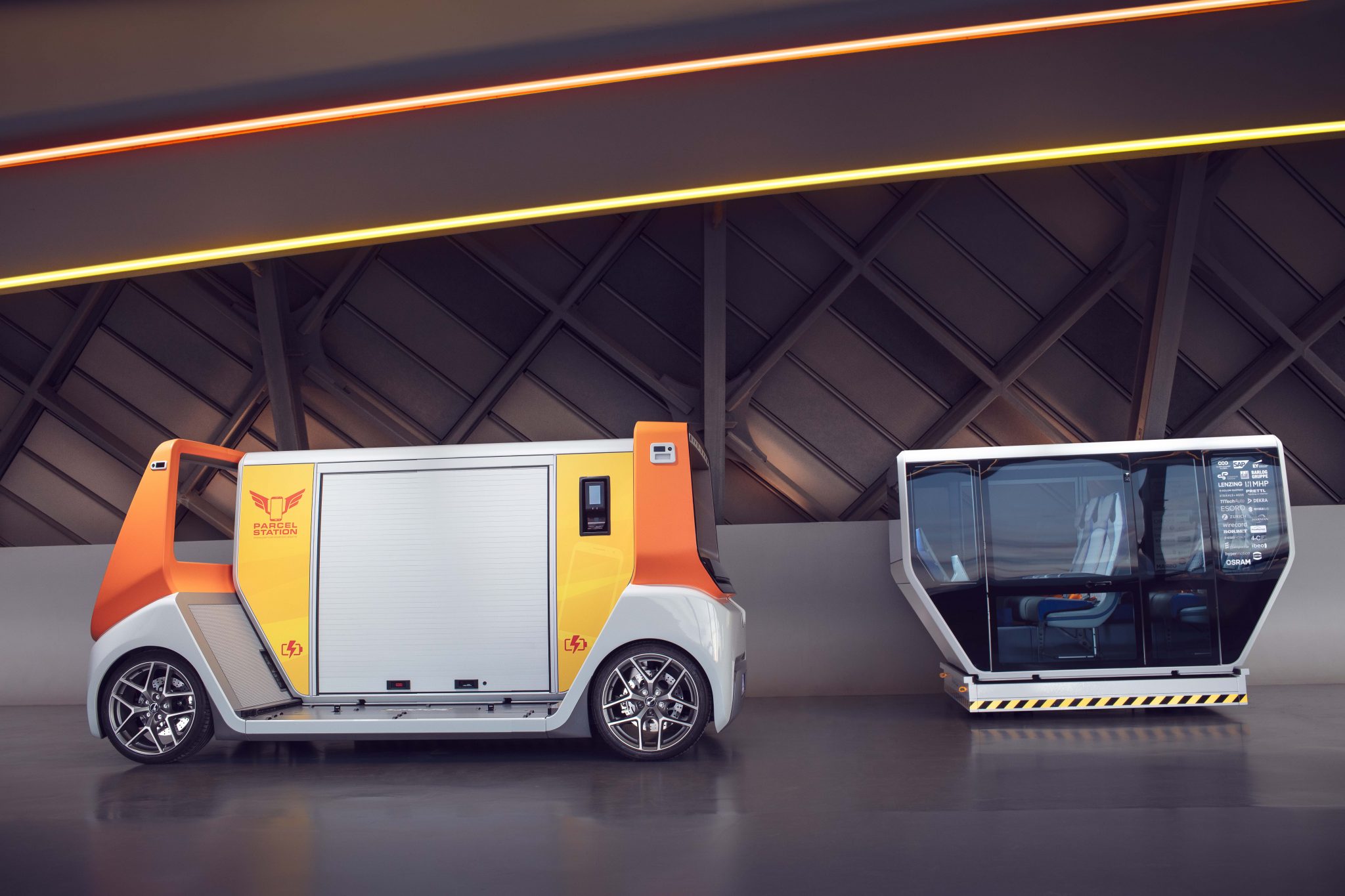At this week’s CES Show in Las Vegas, Swiss automobile manufacturer Rinspeed has unveiled its MetroSnap concept electric vehicle, developed with the help of leading 3D printer OEM Stratasys.
Designed to showcase the “next generation of automated electric automobiles for city life,” the sustainable vehicle features over 30 3D printed interior and exterior parts, produced using Stratasys’ FDM and PolyJet technologies. These parts include everything from interior consoles, display frames, plug socket fixtures and air vents, to the lidar screens and licence plate on the exterior.
Frank M. Rinderknecht, Founder of Rinspeed, comments: “Using Stratasys 3D printing, we were able to design and manufacture customized parts of the MetroSnap in very little time, enabling us to accelerate the design of the vehicle and overcome the limitations of traditional manufacturing during production.”
“For a project such as this, where every element was newly designed and tested, and the launch timeframe is short, having an alternative to traditional manufacturing that can offer you flexibility in design and production is essential.”

MetroSnap features unique swapping system
The MetroSnap features a one-off customized design revolving around a modular system of interchangeable vehicle cabin sections, known as ‘Pods’, that can be fitted onto the chassis, named the ‘Skateboard’. Both the Pod and the Skateboard operate on split batteries. The Skateboard can therefore automatically load different Pods depending on the context, as each Pod is designed to offer different public services, for example, they can be geared towards taxi pick-ups, parcel collections or navigating a supermarket.
To help the development of the Pod, the Rinspeed design team leveraged Stratasys’ FDM 3D printing technology to produce bespoke components. These parts were fit-for-function and maintained the material properties necessary for an end-use automotive application. For example, the Pod’s middle console needed to be durable and lightweight to provide optimal fuel and speed efficiencies. Using Stratasys’ Nylon12CF material, the team were able to 3D print a part with a high stiffness-to-weight ratio and structural strength.

Additionally, the ASA material from Stratasys was utilized to 3D print sensor covers for the vehicle exterior. These covers were able to match the performance of their traditionally manufactured counterparts, as they were equipped with advanced properties to withstand extreme weather conditions and UV-radiation. A significant advantage however is that, utilizing 3D printing, the parts can instead be produced in a matter of hours, saving the project valuable production time compared to traditional methods.
The Rinspeed team also employed Stratasys’ recently released J850 3D printer, equipped with multi-material and full color 3D printing capabilities. This allowed the production of realistic interior parts for the concept vehicle that met the design demands of the MetroSnap, in both shape and color. Examples of 3D printed interior parts include grey charging plug covers, and white dashboard air vents, allowing the team to color match the components of the MetroSnap in a short amount of time, thus helping to accelerate the overall design and development of the vehicle in time for the launch.
Dominik Mueller, Strategic Account Manager at Stratasys, explains: “It is great to see how 3D printing can really offer value in this type of production project, significantly cutting lead times and delivering high quality customized parts. Rapid development in hardware and materials across both of our core technologies have been exemplified during this project, offering manufacturers the ability to transform the design and development process of vehicles and opening the door to even further customization in production.”

3D printing the future of urban travel
As the global population grows and our cities continue to expand, many companies are conceptualizing sustainable, compact vehicles as a means of traversing increasingly urban environments. Like Rinspeed, many of these firms use 3D printing to bring these concept vehicles to life.
For example, at Formnext 2019, German large-format 3D printer manufacturer BigRep unveiled its entirely 3D printed autonomous electric concept vehicle, known as LOCI. As with the MetroSnap, LOCI has been designed to adapt to different urban environments, like daily work commutes, campus transport, local deliveries, and airport and train departures.
Although these are concept cars, 3D printing has also played a role in commercial vehicles that aim to provide a sustainable and smart alternative to urban transportation. Local Motors, an Arizona-based automotive OEM, has developed a 3D printed, electric, autonomous shuttle known as the Olli 2.0, designed for neighborhoods, campuses, and urban city centers as a smart, safe, sustainable transportation option. Share your BICAR AG, a Swiss company specializing in sustainable vehicles has also used 3D printing to support the development of its electric, emission-free single-seater automobile, intended for short and medium distance traveling in urban city environments.
Subscribe to the 3D Printing Industry newsletter for the latest news in additive manufacturing. You can also stay connected by following us on Twitter and liking us on Facebook.
Looking for a career in additive manufacturing? Visit 3D Printing Jobs for a selection of roles in the industry.
Featured image shows MetroSnap making deliveries. Image via Rinspeed.


